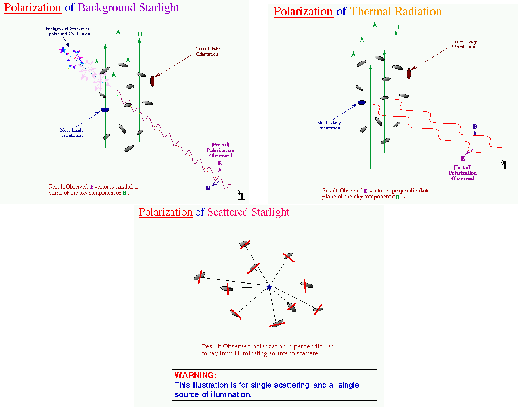



Next: Prestellar Core
Up: Introduction
Previous: L 1544: Pre-protostellar Cores
Contents
Directions of magnetic field are studied by (1) measuring the polarization of light which is suffered from
interstellar absorption.
In this case the direction of magnetic field is parallel to the polarization vector.
The reason is explained in Figure 1.19.
In the magnetic fields, the dusts are aligned in a way that their major axes are perpendicular to
the magnetic field lines.
Such aligned dusts absorb selectively the radiation whose E-vector is parallel to their major axes.
As a result, the detected light has a polarization parallel to the magnetic field lines.
However, the polarization measurement in the near IR wavelength limited to the region with low gas density,
because background stars suffer severe absorption and becomes hard to be observed if we want to measure
the polarization of the high-density region.
More direct method is (2) the measurement of the linear polarization of the thermal emission from dusts in the mm (or sub-mm)
wavelengths; in this case the direction of magnetic field is perpendicular to the polarization vector.
The mechanism is explained in Figure 1.19b.
The aligned dusts, whose major axes are perpendicular to the magnetic field lines, emit the radiation whose
E-vector is parallel to the major axes.
Since the absorption does not have a severe effect in this mm wavelengths,
this gives information the magnetic fields deep inside the clouds.
Figure 1.19:
Explanation how the polarized radiation forms. Taken from Weintraub et al.(2000).
 |
Subsections




Next: Prestellar Core
Up: Introduction
Previous: L 1544: Pre-protostellar Cores
Contents
Kohji Tomisaka
2007-07-08
